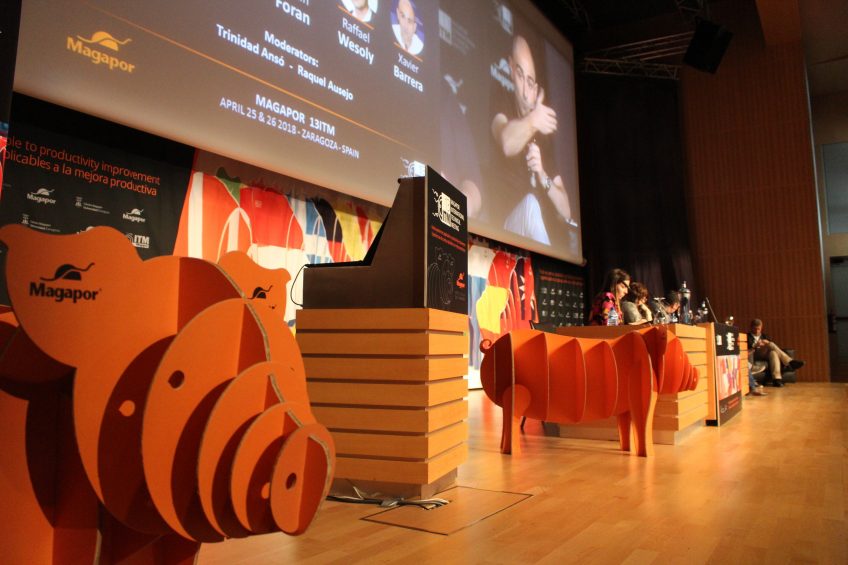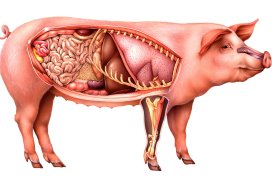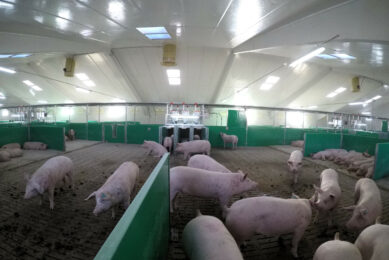Swine reproduction discussed at 13th Magapor conference

Motility, extenders and gilt body weights were just some of the themes discussed at the most recent International Technical Meeting, organised by swine reproduction experts Magapor.
The 13th edition of the event zoomed in deeply on current themes related to swine reproduction. Over 400 breeding experts from 38 countries from all over the globe made it to Zaragoza, Spain, on l 25 and 26 Apri 2018. Representatives from virtually all large swine integrators were present, including JBS, Smithfield, Charoen Pokphand Foods and the Wens Group.
Motility as parameter for sperm quality
They heard how the 1st speaker Dr Marc Yeste, University of Girona, Spain, wondered whether sperm motility is the most important parameter to assess the quality of sperm? The answer to that question is as always not a straightforward ‘yes’ or ‘no’.
He explained that sperm motility indeed may be a crucial parameter – but is certainly not the only one. Other parameters may have to be tested prior to discarding an ejaculate, he said.

The role of boars
Secondly, Dr Kara Stewart, Purdue University, United States, addressed the role of the boar in the adoption of reproductive technologies. One of the strategies to follow to improve the results of boar studs is to figure out whether it is possible to achieve similar results with lower doses of semen – “and if so, how low can we reduce the semen dose before we impair fertility using post-cervical artificial insemination (PCAI)?”
One other question that popped up in this context, she said, is whether all boars can perform equally at lowered doses. There appear to be differences, she said, so there is a need to produce consistent insemination doses.
Outcomes of the PSCCS
Joaquín Miguel, member of Magapor’s R&D team, shared the results of the Seminal Quality Monitoring and Control Plan, in Spanish abbreviated to PSCCS. This is an annual quality control update of swine semen.
Amongst AI customers, several things are being measured like dose reception temperature, pH, osmolality, conductivity, concentration, motility, agglutination, abnormal forms, acrosomes, membrane integrity and function tests, cultivation and microbial counting of total mesophilic aerobes and moulds and yeasts.
Developments in boar extender technology
His R&D colleague Dr Noelia Mendoza presented a clear overview of which developments are currently being investigated to improve boar semen extender. In order to answer that question she summed up the functions of an extender – regulating pH, creating an osmotic balance, stabilising membranes, having an antibiotic function, providing energy, and neutralising metabolic waste.

She discussed new studies being executed to improve ways of preserving semen, e.g. to keep semen at lower temperatures, but that wouldn’t make any difference in terms of bacterial growth. She touched on Magapor’s own semen extender Spermax, which has a strong antioxidant power.
Prediction of boar fertility
Associated with the Chung-Ang University in Anseong, South Korea, Prof Dr Myung-Geol Pang discussed parameters that might predict boar fertility. He spoke about methods which could identify high quality semen and biomarkers.

Read more about pig health in the Pig Progress Health Tool
Boar studs and health issues
Darwin Reicks, DVM, is owner of Reicks Veterinary Research & Consulting and he discussed a series of practical studies that might shed further light on day-to-day practice in boar studs.
The 1st study he discussed investigated the relative low semen doses and poor quality in younger boars. He wanted to know whether or not increased feeding during quarantine might make a difference. He also touched on research projects regarding virus shedding through semen, referring to PEDv, PRRSv and Senecavirus A. Very regular testing for these viruses can be essential, he said, as PRRSv and Senecavirus can be detected in semen 24 hours prior to the onset of clinical signs.
A veterinarian view
Manuel Toledo is veterinarian at Agropecuaria Casanuevas, he spoke twice at the conference. In the 1st session, he discussed sperm toxicity; the 2nd he spoke about production management of the hyperprolific sow.

At what weight should gilts be inseminated?
In an interesting contribution from Brazil, Prof Fernando Bortolozzo of the Federal University of Rio Grande do Sul discussed the body development of gilts from puberty to the 1st weaning and he wondered whether average daily gain should – or should not – be limited in modern genotype.
In a very practical wrap-up, he gave a clear overview at which weight to move each individual gilt to their first insemination sessions – as well as at which weight to have them at first farrowing and at first weaning.
Quality standards for AI
Last but not least, Pedro Ivo Quadros spoke about the quality standard for AI doses and the risk associated with using semen which falls outside these quality standards. He is CEO of Bretanha, the Magapor distributor in Brazil. He came up with an interesting lesson of odds calculation. The bottom line is that the earlier that problems occur in the reproduction chain, the more likely it is that effects will be felt later in the chain.












